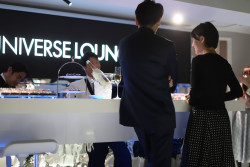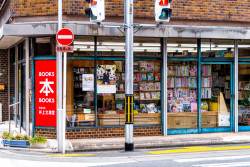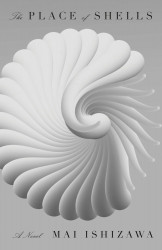
March 15, 2013
Living National Treasure
The rebuilt Kabuki-za has put the art form back in the spotlight
By Metropolis
Originally published on metropolis.co.jp on March 2013

NUTS & BOLTS
☛ Venues in Tokyo include Le Theatre Ginza, Shinbashi Enbujo (both at same site), and the National Theater, but the Kabuki-za is the capital’s only dedicated venue.
☛ Buy tickets online, by phone, or by post—see each site for details.
☛ Tickets can also be bought at the box office on the day, but popular programs, opening days, and good seats sell out quickly.
☛ Theater-goers who want a taste of drama but aren’t willing to commit to five or so hours can buy—at the Kabuki-za only—makumi (“one-act”) tickets on the day of the show, available for sale shortly before each performance. Tickets are around ¥500-¥1,500 a pop and are for the cheap seats, but are a great way for newbies to get their feet wet.
☛ Prices for regular shows range from ¥1,500 (National Theater cheapest seats) to ¥22,000 (Kabuki-za box seats).
☛ English earphone guides are available for rent at the Kabuki-za, the National Theater, and the Enbujo, and provide not only translation but other tidbits. The new Kabuki-za will also have mini LED screens with subtitles for rent, though no English until summer.
☛ Japanese speakers should read the play or a synopsis beforehand, as the language is old-fashioned and difficult even for some native speakers.
The actor glides through the audience up the hanamichi in a gilded kimono, his stark white, black, and red makeup transforming his face into that of a coquettish beauty. “She” freezes in an elaborate mie pose, hands and body positioned just-so to create a living still life. Wooden blocks clack and clatter from stage left, framing the moment in sound, and a lusty call from the audience emerges, shouting the actor’s stage name before the picture moves and the story continues.
In 1603, a woman called Izumo no Okuni danced with her troupe on the dry bed of the Kamo River in Kyoto. Okuni was an avant-garde figure who dressed in costumes considered off-kilter for the times. This style was described by the (now archaic) verb “kabuku” (傾く)—to tilt or lean—and was applied to the more avant-garde elements of fshion and society. Okuni’s all-female troupe performed both female and male roles and the performance style became known as onna-kabuki.
In 1629, the shogunate prohibited females from performing out of a feeling that they provoked immorality. The actresses often doubled as prostitutes, plying their wares during the shows. In response to the law, boy actors began to play the female roles. But their beauty was so alluring that they too began to profit from the spectators’ lewd attentions, and were banned in turn. Finally, older male actors took on all the roles—and the onnagata style was born.
New Generation
Four hundred years on and kabuki is still going strong, despite recent upheaval. “It’s a fascinating time in kabuki right now,” says Dr. Laurence Kominz, a kabuki scholar in residence at Waseda University. “Because of the loss of several great actors, younger actors need to step up fast.”
Stepping up they are. In March alone, there are four kabuki shows happening in Tokyo, all starring younger actors (hanagata performances). Two feature the sons of recently-deceased illustrious actors: Ichikawa Ebizo XI, son of Danjuro XII, stars in Natsu Matsuri Naniwa Kagami at Le Theatre Ginza, and brothers Nakamura Kankuro VI and Shichinosuke II, sons of Kanzaburo XVIII, star in Kaidan Chibusa Enoki at Akasaka ACT Theater.
Another exciting show at the National Theater, Sumidagawa Hana no Gosho Zome, featuring young onnagata favorite Nakamura Fukusuke, is full of supernatural characters, fight scenes, and magic.
Kabuki is mostly a family affair, with skills passed from father to son and uncle to nephew. Children begin training as early as four, and many make their stage debut around age seven. Most of the big stars come from a handful of venerable families, with stage names (typically first names) handed down through the generations.
“It’s a time of transition. Some people think it could be a time of crisis, but if we have solid artistic performances by these youngsters in March and they’re well attended, that means that kabuki is rising to the challenge,” says Kominz.

the kab gab
- 荒事 aragoto
Wild or active acting style used for male superheroes - 花道 hanamichi
Catwalk/walkway leading from the back of the first floor audience to the main stage - 時代物 jidaimono
Plays based on historical events, battles - 掛け声 kakegoe
Act of calling out to favorite actors their stage or guild names. It can sound like heckling but is usually reverential - 世話物 sewamono
Plays based on the lives of commoners, e.g. on love, domestic strife, crime - ケレン keren
Stage tricks, like “flying” and disappearing - 見得 mie
Hold pose that freezes the scene to create a living tableau - 女方 onnagata
An actor who specializes in female roles - 所作事 shosagoto
Dance drama - 立役 tachiyaku
Actor who specializes in male roles - 和事 wagoto
Gentle romantic acting style - 屋号 yago
Actors’ guild/acting family
historic heartland
After the new guard has had a chance to prove their worth, the veteran stars take their turn in christening the new Kabuki-za (Kabuki Theater), slated to open in April.
The original wooden building, built in 1889, has had almost as many new beginnings as the art-form has had acting generations. Burned down in an electrical fire in 1921, it was undergoing reconstruction when it was destroyed in the Great Kanto Earthquake of 1923. Again it was rebuilt, only to sustain heavy damage in 1945 from the Allied bombing of Tokyo in WWII. Reopened in 1950, it survived its longest stretch yet—before being torn down for reconstruction in 2010.
The new building, designed by renowed architect Kengo Kuma [pictured, top left], has direct access to the subway, barrier-free toilets, and boasts more seismic safety, according to a statement made by management company Shochiku’s board chairman Nobuyoshi Otani. It will be similar in design to the old theater, but with technological updates like lower carbon emissions and solar power. It will also be attached to a high-rise building behind where office space will be rented out and a gallery will display kabuki-themed prints and objects.
To celebrate the reopening of the Kabuki-za, Shochiku has put together three months of programs featuring the heaviest hitters on the scene. “If you go to any show in the first three months, you will see great, classic kabuki,” Kominz says. Tickets may be hard to procure, especially in April, so plan ahead.
kab drivers
Who’s who on the scene
Nakamura Shido II is an example of an actor with a lot of crossover appeal. He has worked as a seiyu (voice actor) and has appeared in many films—you may have seen him in Ping Pong, Jet Li’s Fearless or Clint Eastwood’s Letters from Iwo Jima. He was quoted in Time as saying, “The original Kabuki actors had a real punk attitude. It was the rock music of the Edo period.”
Ichikawa Ennosuke III, an actor famous for chunori (“flying” over the stage attached to wires), is responsible for the creation of Super Kabuki, a kind of kabuki on speed. If you like keren and bombast, then Super Kabuki may be for you. His nephew, Ennosuke IV, has taken the helm of this endeavor and the “Ennosuke” name was passed on to him in 2012.
Nakamura Shichinosuke II, a versatile young actor who has also appeared in films such as The Last Samurai, got into a scrape in 2005 when he punched out a policeman.
Popular kabuki and screen actor Ichikawa Ebizo XI was the star of the NHK drama Musashi, and saw media heat when he came to fisticuffs with a motorcycle gang in 2010.
Beloved onnagata actor Bando Tamasaburo V has appeared in several movies, collaborated with Yo Yo Ma on an interpretive dance collaboration, and directed the renowned taiko group Kodo’s “One Earth Tour.”
The Suntory Museum of Art is running an exhibition exploring the history of kabuki through artwork including depictions of Izumo no Okuni [example pictured top]







